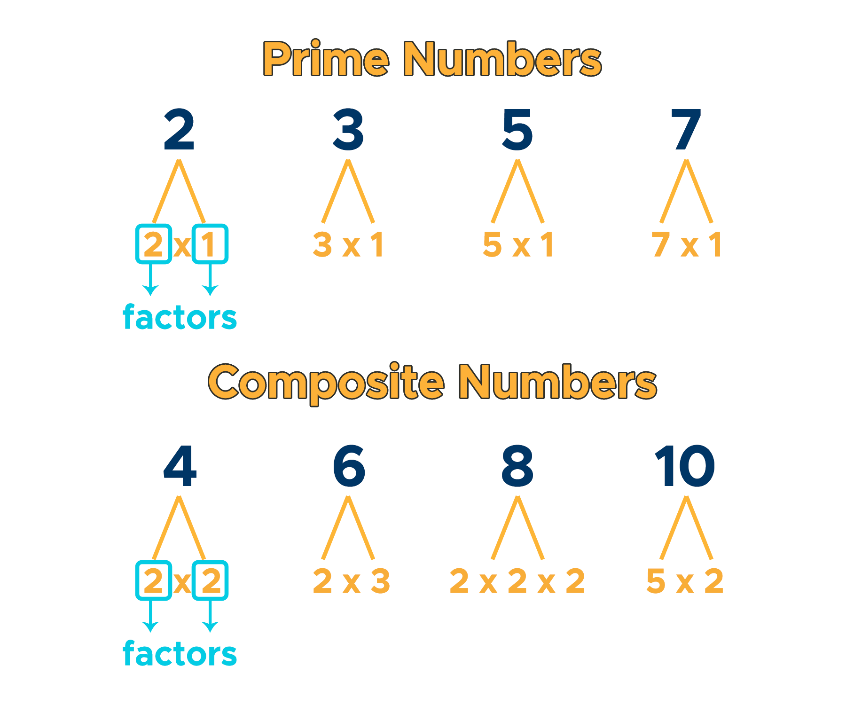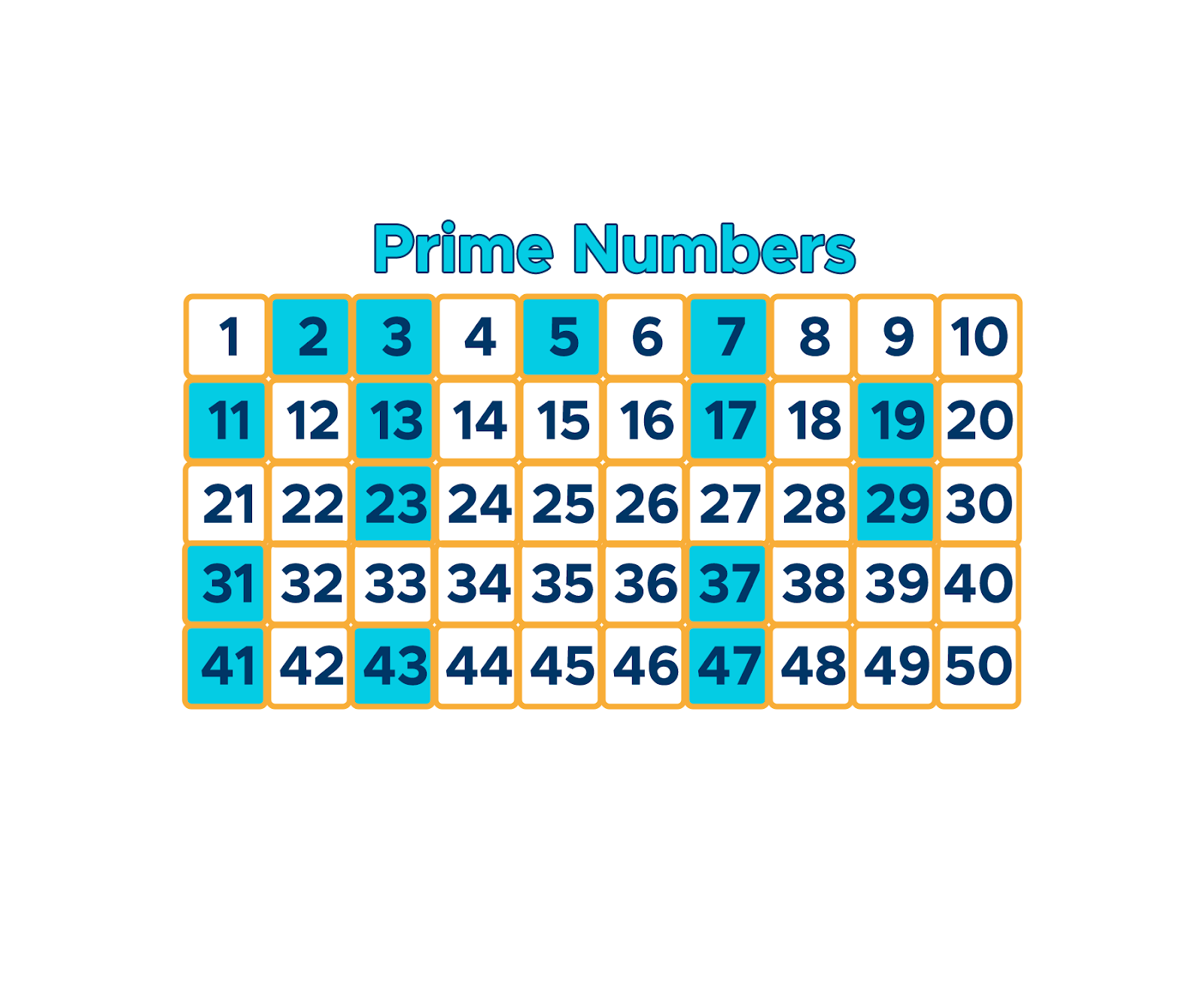What are Prime Numbers?
Prime numbers are whole numbers greater than 1 that are not a product of two other whole numbers. For example, 2 is a prime number because it can only be a product of 1 and itself 12; no other two numbers can be multiplied to make 2. The numbers 3, 5, and 7 are also prime numbers. Remember that prime numbers are whole, positive numbers – they can’t be fractions and decimals.
If a whole number can be formed by multiplying two numbers other than itself, then it’s a composite number. The number 10 is a composite because it’s a product of other numbers: 25. We can say that 2 and 5 are factors of 10. Factors are numbers that we multiply to get a product.

Here’s a chart of prime and composite numbers from 2-50. Take note that 1 is neither a prime nor a composite number. The prime numbers are highlighted in blue.

Prime Factorization: How to Find the Prime Factors of a Composite Number
Prime factorization refers to the method of finding the prime numbers that are factors of a given number. It means breaking the given number down to its last prime factor.
Example #1: Find the Prime Factors of 44 Using Prime Factorization
Solution to Example #1:
Step 1. Divide the composite number, 44, by a prime number, such as 2.
44 / 2 = 22
Step 2. Since 22 is still a composite number, break it down further. Divide it by 2 again.
22 / 2 = 11
Step 3. Now we’ve reached the last prime factor! This gives us the answer:
44 = 2 • 2 • 11
Therefore, the prime factors of 44 are 2 • 2 • 11 or 22 • 11.
Example #2: Find the Prime Factors of 154 Using Prime Factorization
Solution to Example #2:
Step 1. We’re working with a bigger composite number in this example, so let’s divide by a bigger prime number.
Remember that we don’t work on decimals in factorization. Let’s try using the prime number 11.
154 / 11 = 14
Step 2. Divide 14 by another prime number, 7.
14 / 7 = 2
Therefore, the prime factors of 154 are 2 • 7 • 11.
Factor Tree
Another way of factorizing a number is through the factor tree – a visual way of diagramming the factors of a number. To create the diagram, start with the two factors of a given number, then extract the factors of those first two numbers until you reach the last prime factor. As the name suggests, the resulting diagram looks like a tree.
Example #3: Find the Prime Factors of 92 Using a Factor Tree

Solution to Example #3:
Start by finding the first two factors of 92.
We know that 46 • 2 = 92 so write them below 92.
Then factor 46 into 23 • 2.
Since 23 and 2 are prime numbers, we can’t extract them further.
Therefore, the prime factors of 92 are 2 • 2 • 23 or 22 • 23.
Example #4: Find the Prime Factors of 45 Using a Factor Tree

Solution to Example #4:
We know that 15 • 3 = 45 so write them below 45.
Then factor 15 into 3 • 5.
3 and 5 are both prime numbers.
Therefore, the prime factors of 45 are 3 • 3 • 5 or 32 • 5.
Example #5: Find the Prime Factors of 126 Using a Factor Tree

Solution to Example #5:
Divide 126 by a relatively big prime number, 7, to come up with its factors:
126 / 7 = 18
Write 18 and 7 as factors below 126.
Then factor 18 into 9 • 2.
Factor 9 again into 3 • 3.
Therefore, the prime factors of 126 are 2 • 3 • 3 • 7 or 2 • 32 • 7.
Thank you for reading. We hope it’s effective! Always feel free to revisit this page if you ever have any questions about the prime numbers and prime factorization.
Check out some of our other blog posts or invest in your future with one of our self-study courses!


